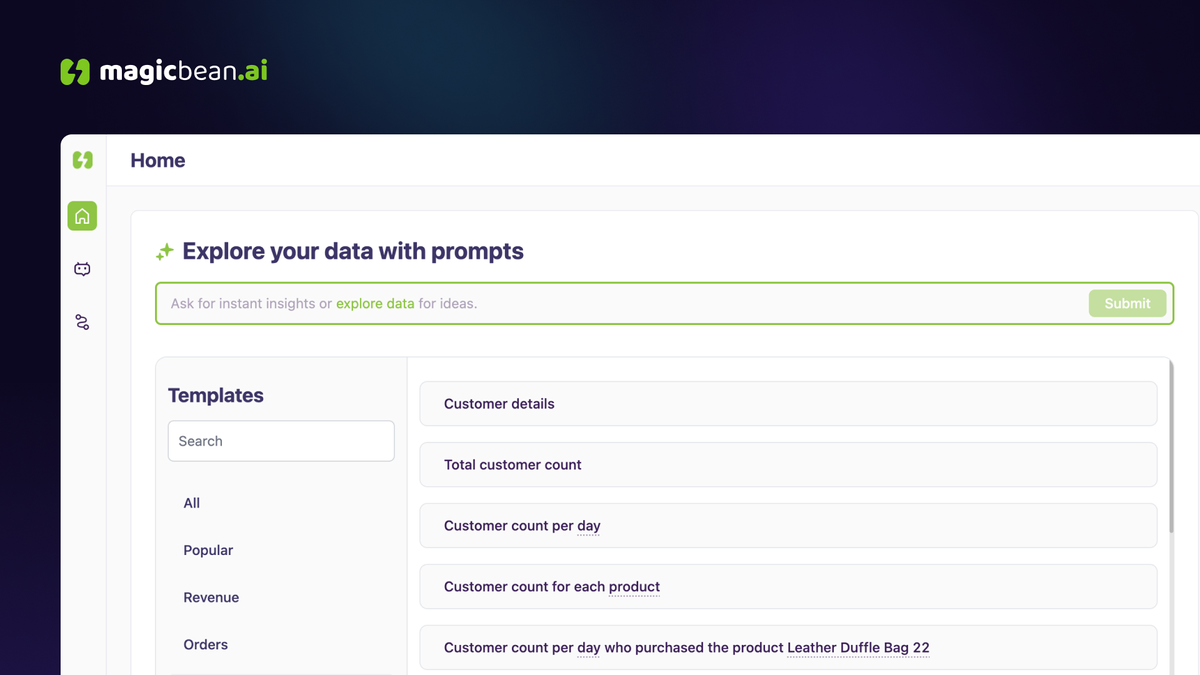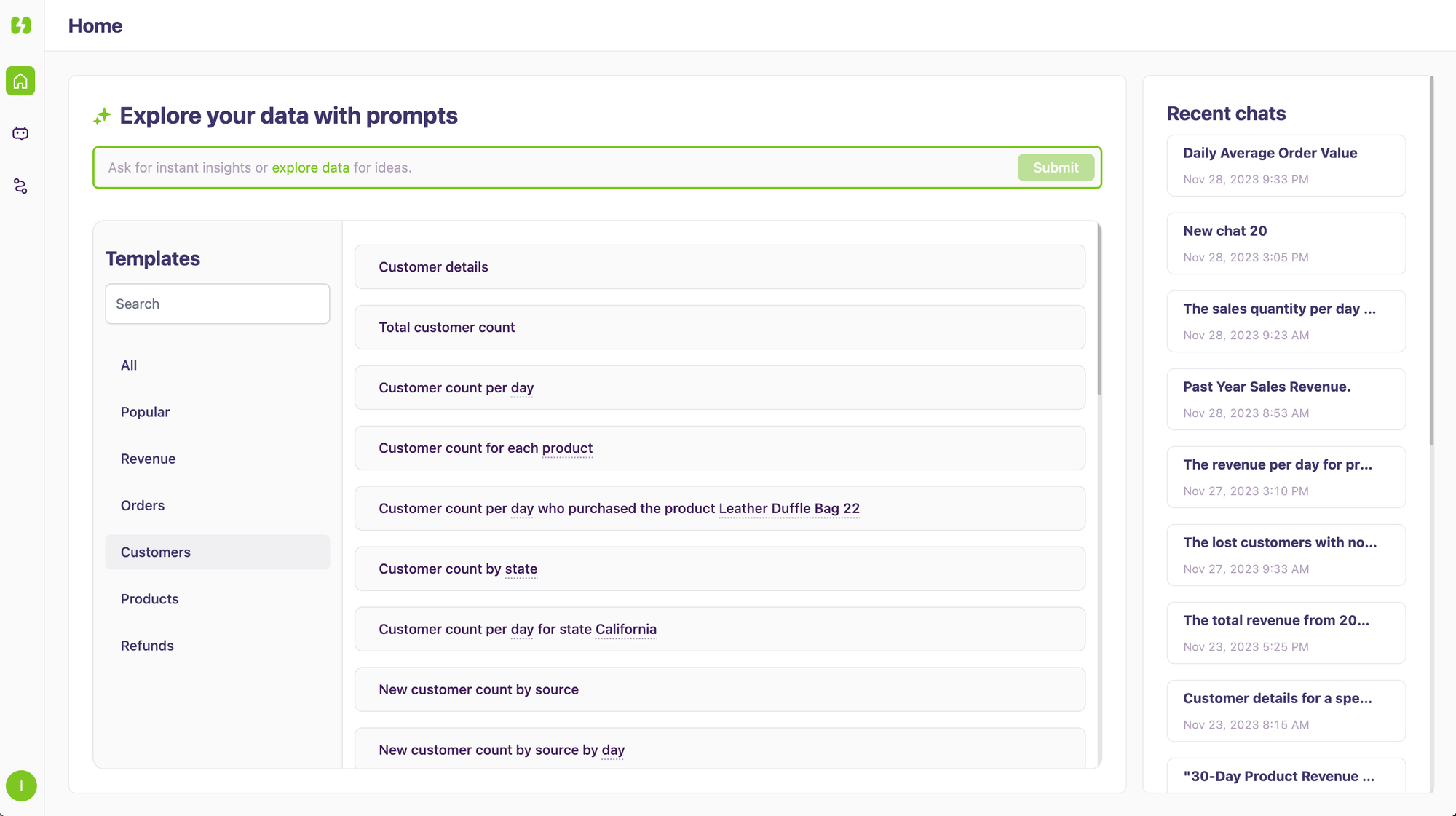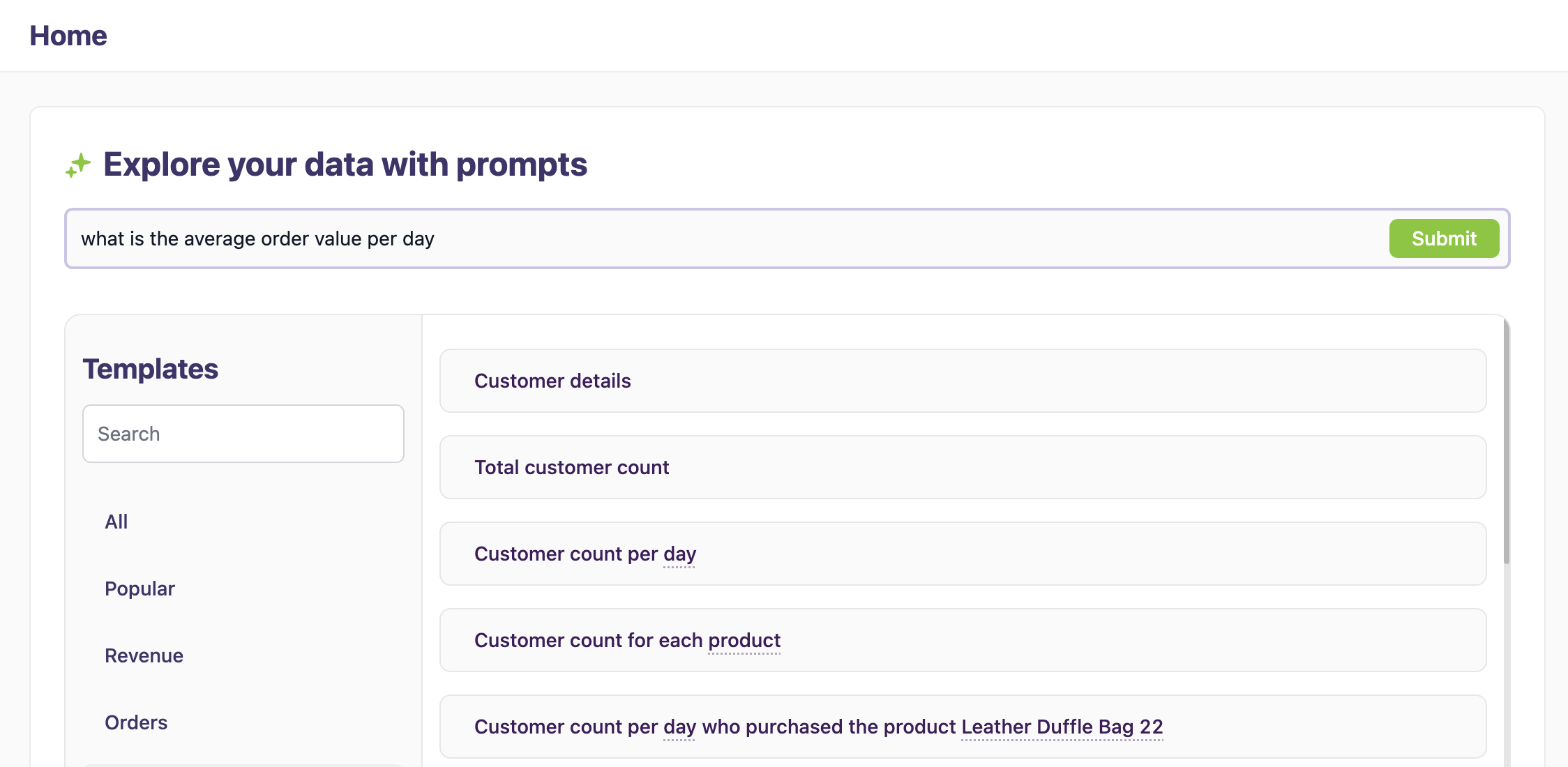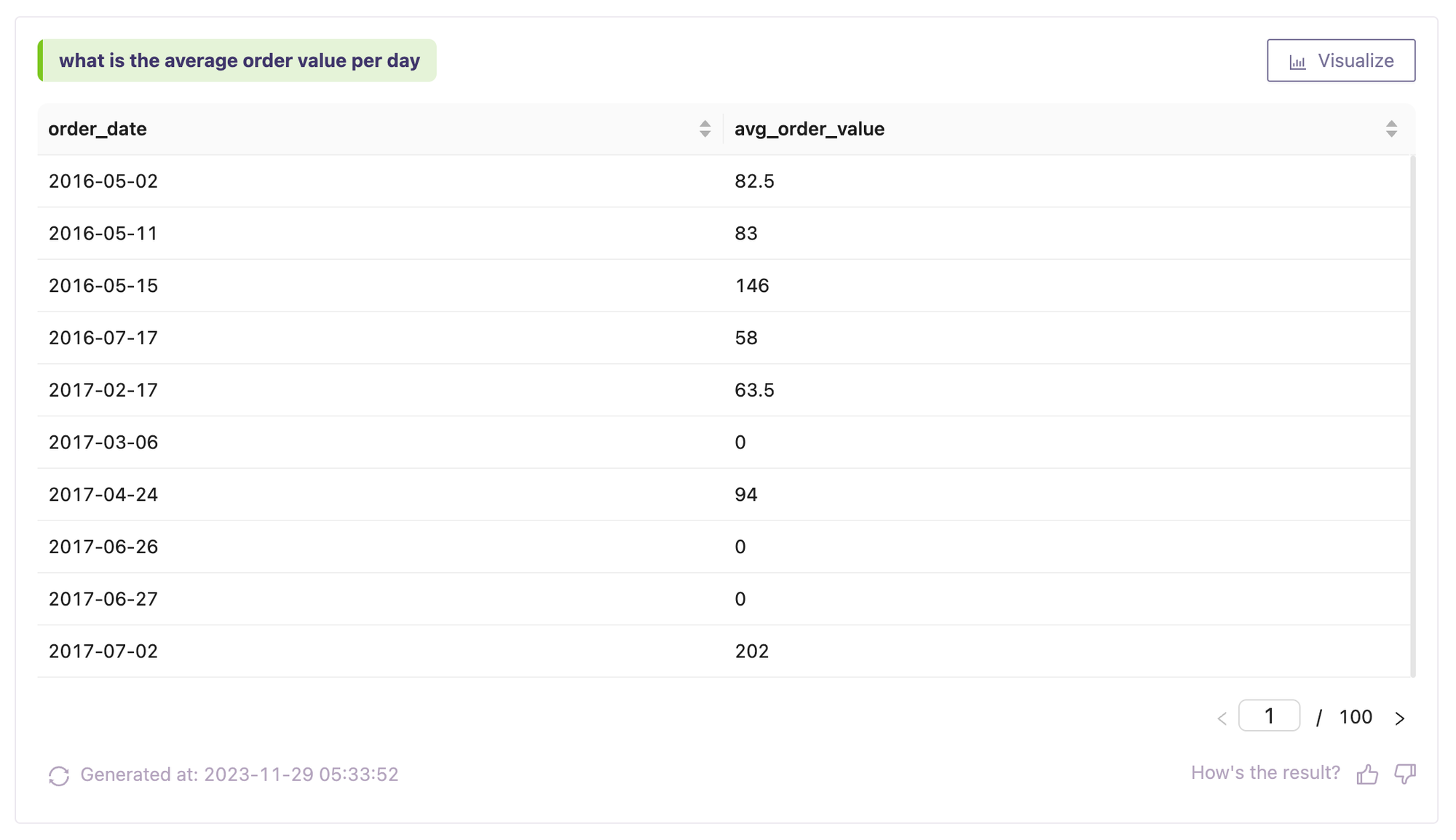How to get actionable e-commerce data insights with MagicGPT

Imagine these two scenarios.
Scenario 1: You are a CMO or VP of Marketing, having access to data but not being able to use it to drive your e-commerce marketing decisions because it's too cumbersome.
Scenario 2: You are a small marketing team that just realized the need for data to drive informed marketing decisions and increase sales.
But you are faced with one problem: cumbersome data you couldn't make sense of.
In both scenarios, if you have been panicking about hiring an e-commerce data analyst that your team cannot afford, then you are on the right blog.
The exciting news is that at MagicBean, we just made a product update to enable you to get simple and actionable e-commerce insights at the snap of a finger.
In this blog, you will learn about MagicBean, the product updates we made, and how they can propel your marketing forward and drive growth for your company.
What does MagicBean do?
MagicBean is an e-commerce analytics tool that provides holistic data insights for e-commerce companies. MagicBean aims to help you understand your customer's behavior and use these insights to drive more sales.
Product Update: A better MagicGPT
Following our recent product update, MagicGPT is now the major app of MagicBean.
MagicGPT is a tool that answers all your e-commerce analytics questions as clearly as possible. Once you integrate your Shopify store, all you need to do is enter your question as a prompt, and based on your customer's past interactions with your store, you get accurate answers.

For instance, if you want to know your average order value per day, enter your query as a prompt, as shown below:

Then you get your answer:

In addition to entering any query you want answered, part of the product update are prompts to help with your research and data collection.
These prompts, known as recipes, are grouped into different categories:
1. Revenue
Revenue is a salient aspect of an e-commerce business that every marketer should keep an eye on regularly. It helps you keep track of how much is coming in and from where or who.
If you need any data on your revenue, MagicGPT has prompts to help you articulate your search.
Examples of prompts to make your e-commerce data analytics easier are
- The revenue that came in within a particular period
- Revenue brought in by a particular product
- The revenue from a geographical location
For instance, when you get insight into the geographical location that brings you the most revenue, you can deduce why.
For your next promotion or ads campaign, you can make informed decisions by targeting that geographical area.
In addition, you can enter any query you want that is not among the recipes and get your answers.
2. Orders:
Keeping track of each order you get helps you keep track of your performance.
For instance, comparing last month's orders with that of the month will let you know if there is an increase or decrease in performance, making you adjust accordingly.
Examples of prompts under the orders recipe include
- The order count within a specific period
- The order count from a specific location within a specific period
- The order count for new and repeat customers within a specific period among others
In addition to the prompts under the orders recipe, you can input any questions about your orders, and you will get your answers with MagicGPT.
3. Customers:
Not all customers are the same, and knowing this will make a lot of difference in your marketing and the results you drive.
For instance, some customers are new, and there are repeat or active customers; there are customers that are about to churn and those that have churned already.
When you identify these customers using analytics, you can devise separate marketing campaigns targeted at each customer type to get the best from each of them.
You can get detailed insights into your customer's behavior through RFM customer segmentation with the following prompts:
Champion customers: These customers spend the most in your store and buy the most often and most recently. They are golden customers that contribute a lot to your business revenue.
Active customers: These customers buy from you often but spend less than your champion customers. They are loyal to your business and refer others around them to you.
At-risk customers: These are customers that are at risk of churn. Identifying these customers early allows you to develop strategies to retain and move them higher in the segment.
Lost customers: These are customers that have already churned. It is important to identify this customer segment, as it enables you to draft marketing strategies to get them back.
In addition, customers add varying values to your business. Knowing each customer's values for your store enables you to employ targeted messaging.
For instance, while customer A brings $5000 to your store per month, customer B spends $100 there per month.
In your upcoming campaign, you can divide your customers into 3 groups: those who spend less than $500 per month, those who spend between $500 and $1000, and those who spend above $1000.
Then, create customized messages for the three groups to enable you to get the most out of your sales.
Other prompts under the customer recipe are
- Average value of orders from customers within a specific state
- Customer lifetime value within a specified period
- Average order value by a particular state within a specified period
If you have any other analytics questions related to customer analytics, you can input them and get your answers.
4. Products:
The products in your e-commerce store are a very important aspect you need insights on if you want to make the right decisions that will impact sales.
Important product analytics to look out for regularly are
- The products with the highest sales within a specific period
- Top 3, 5 or 10 best-selling products in your store
- Products with monthly revenue above $10,000
- Any other insights you would like concerning the products in your store
Knowing which products each customer likes helps you implement a personalized store experience.
For example, for an e-commerce clothing store, when customer A buys mainly Yves Saint Laurent products, you can recommend products from that brand to the customer, propelling your sales.
5. Refunds:
Refunds are an aspect of e-commerce that can be easily ignored, yet it is an aspect every marketer should pay attention to.
- The amount of refunds in a day, week, or month
- The products with the most refunds
- The state that requests the most refunds
When you pay attention to these insights, you can identify the root cause of those refunds, address it appropriately and increase customer satisfaction.
Sign up for a free trial of MagicBean.
MagicBean offers a free 14-day app trial, where you get access and valuable insights into your e-commerce business.
You can become your own e-commerce data hero by signing up for the free trial today and driving growth and revenue for your business.



